Follow-Up: Eric Pan’s Speech Recap on Decentralized and Open Innovation for SDGs at UN ITU’s “AI for Good” Event
By Ye Seong SHIN 3 years ago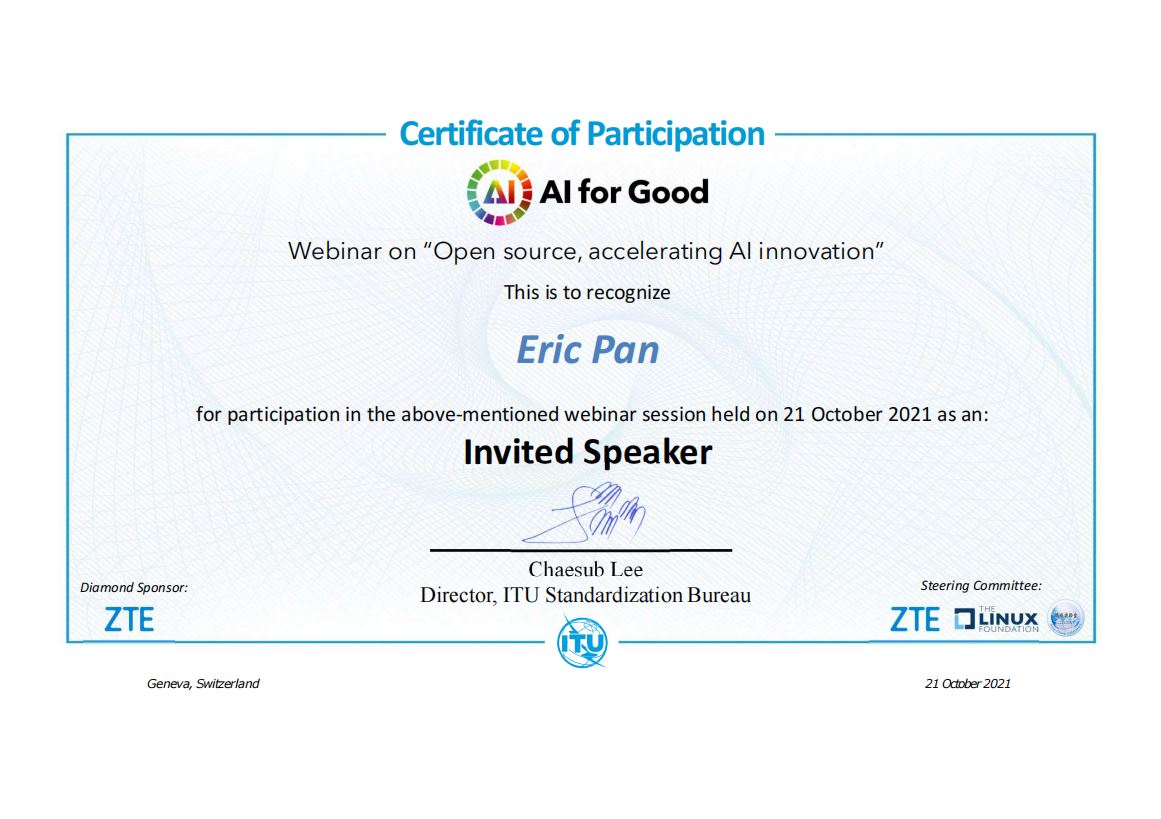
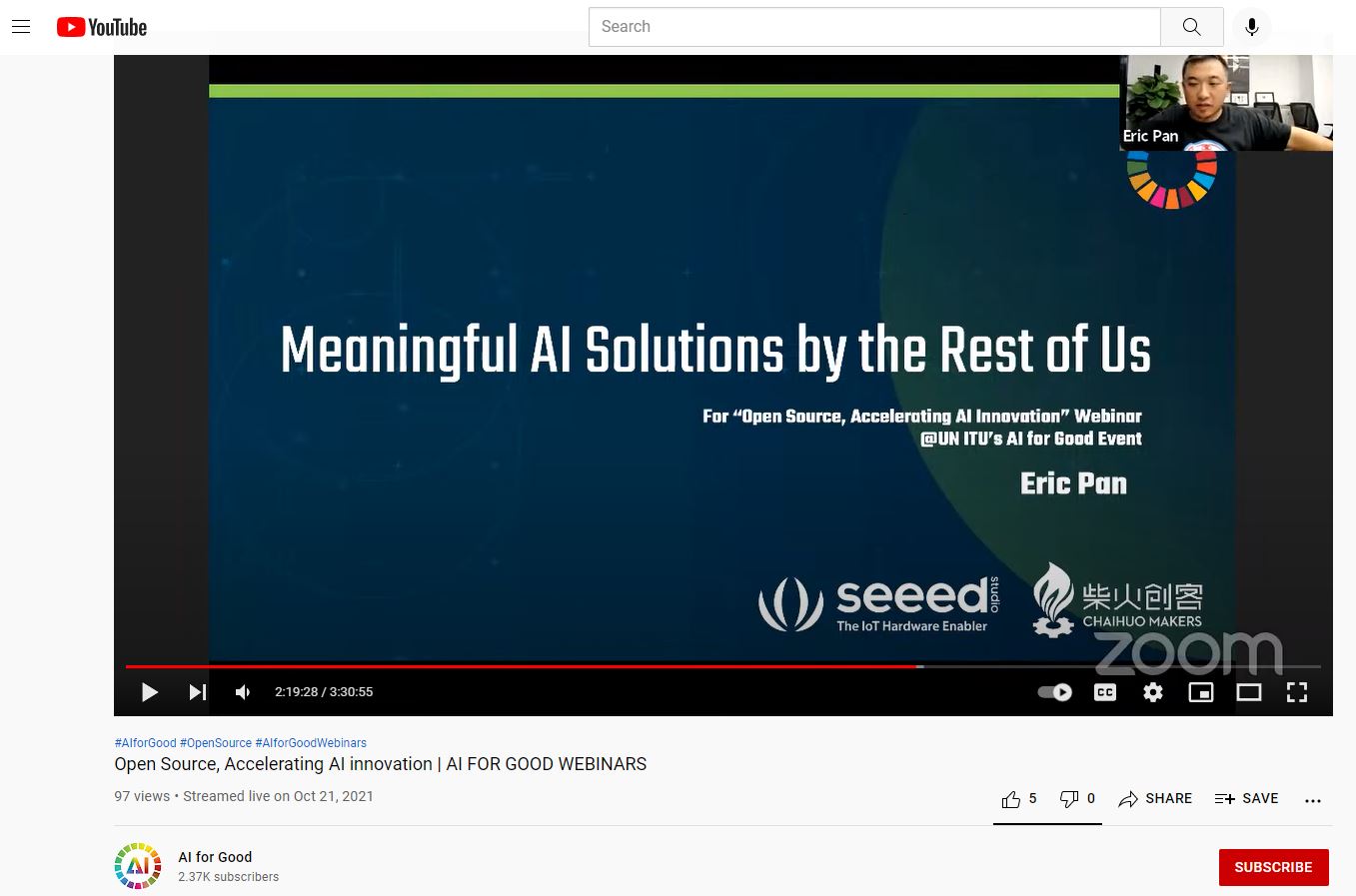
Figure 1. Mr. Eric Pan’s Participation at UN ITU’s AI for Good Event
and His Speech on “Meaningful AI Solutions by the Rest of Us”
(Recorded Webinar Link: https://youtu.be/WScUbU4fIx4?t=8340)
What Was It About?
At the beginning of this year, the UN’s International Telecommunication Union (ITU) organized a series of annual webinar events known as “AI for Good” (Figure 2). On this occasion, many interesting topics on applications of AI solutions for the implementation of the UN’s Sustainable Development Goals (SDGs) are discussed by multi-stakeholders from companies, UN agencies, academia, CSOs, research institutions, and many more. Among them, a thematic webinar on “Open Source, Accelerating AI Innovation” was held online on October 21st (hosted by ZTE, Linux Foundation, and Peng Cheng Laboratory), for which Seeed Studio’s Founder and CEO, Mr. Eric Pan, had the honor to participate as a guest speaker.
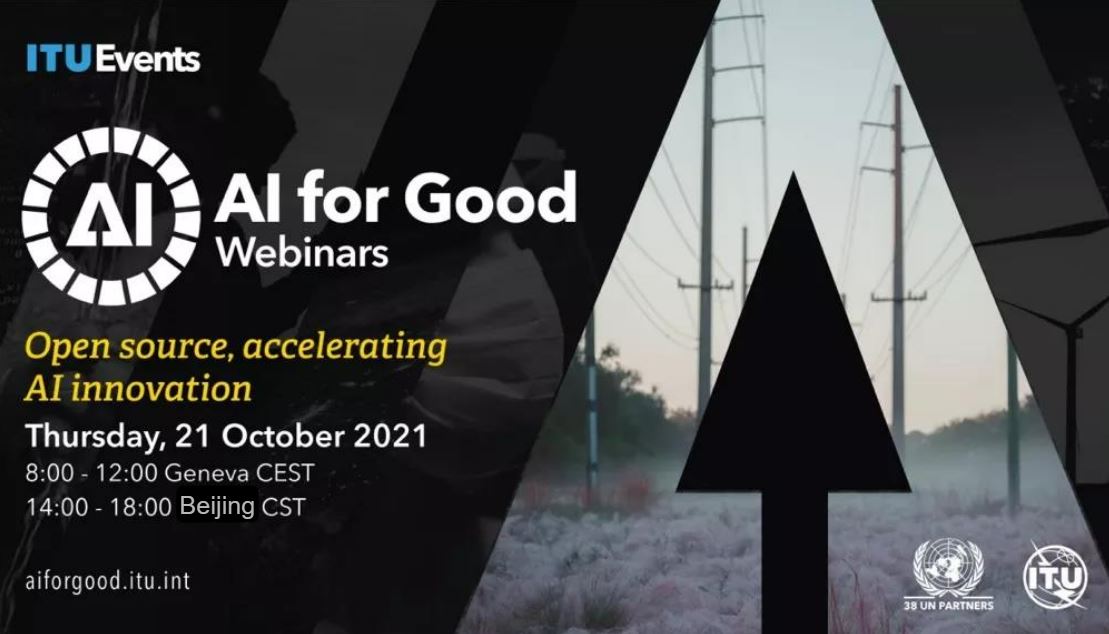
Figure 2. Webinar on “Open Source, Accelerating AI Innovation” (AI for Good, 2021)
For this webinar, Mr. Eric Pan shared his expertise and insights on AI innovations for SDGs, with his speech title of “Meaningful AI Solutions by the Rest of Us” (Figure 2). He shared how open source hardware has enabled global innovators to resolve glocally-entrenched sustainability challenges, specifically by deploying the latest IoT and AI technologies.
What Are the Main Takeaways?
To illuminate the essence of Mr. Eric Pan’s speech, 6 points of significance have been discovered.
First, as we are advocates of open science and open source innovations, Mr. Eric Pan emphasized the close bond with maker communities all over the world, that is the core and the driving force of Seeed’s business operations. As Mr. Eric Pan described,
“We have worked with maker communities across the planet, and many non-traditional engineers have been enabled to create their own devices. So, we work with them closely to put them into configurable IoT and AI solutions. And we see more and more system integrators are using IoT and AI for emerging needs. … falling into the SDGs. … You’ll see a lot of needs, they’re not only for laboratories to do some research, but also for going outdoors, going for real [-life] productivity sites. So, we work closely with [diverse] scenarios to create ready-to-use, long-lasting stuff. … We work with the communities to create the case study, and to share among the ecosystem. ”
Second, from his years of expertise in the open tech, AI and IoT field, he shared that the present open innovation era is unleashing very good opportunities to use technologies for good, the SDGs, and other sustainability issues. As reported by Harvard Business Review (2021), “innovation in China is less about innovators, and more about the average person”. On this background, Mr. Eric Pan pinpoints, that the utmostly important factor – which must be prioritized – in achieving these lofty goals – is “people” (Figure 3):
“We see more and more people are involved in technological innovations. They might not be trained as engineers, but they have passion coming from different industries. Today, they can use embedded systems, AI, and IoT to really create new inventions. We see this as the Maker Movement. … This has created a lot of possibilities, [especially] educating our students to realize that they’re not the consumers only. They can be the technology creators, thanks to open source hardware and software. … People are creating more and more complex and sophisticated projects from audio-interaction mirrors to water pollution detectors and robotics. We see people are creating not only as hobbyists, but also becoming the initiators of new technology and solutions.”
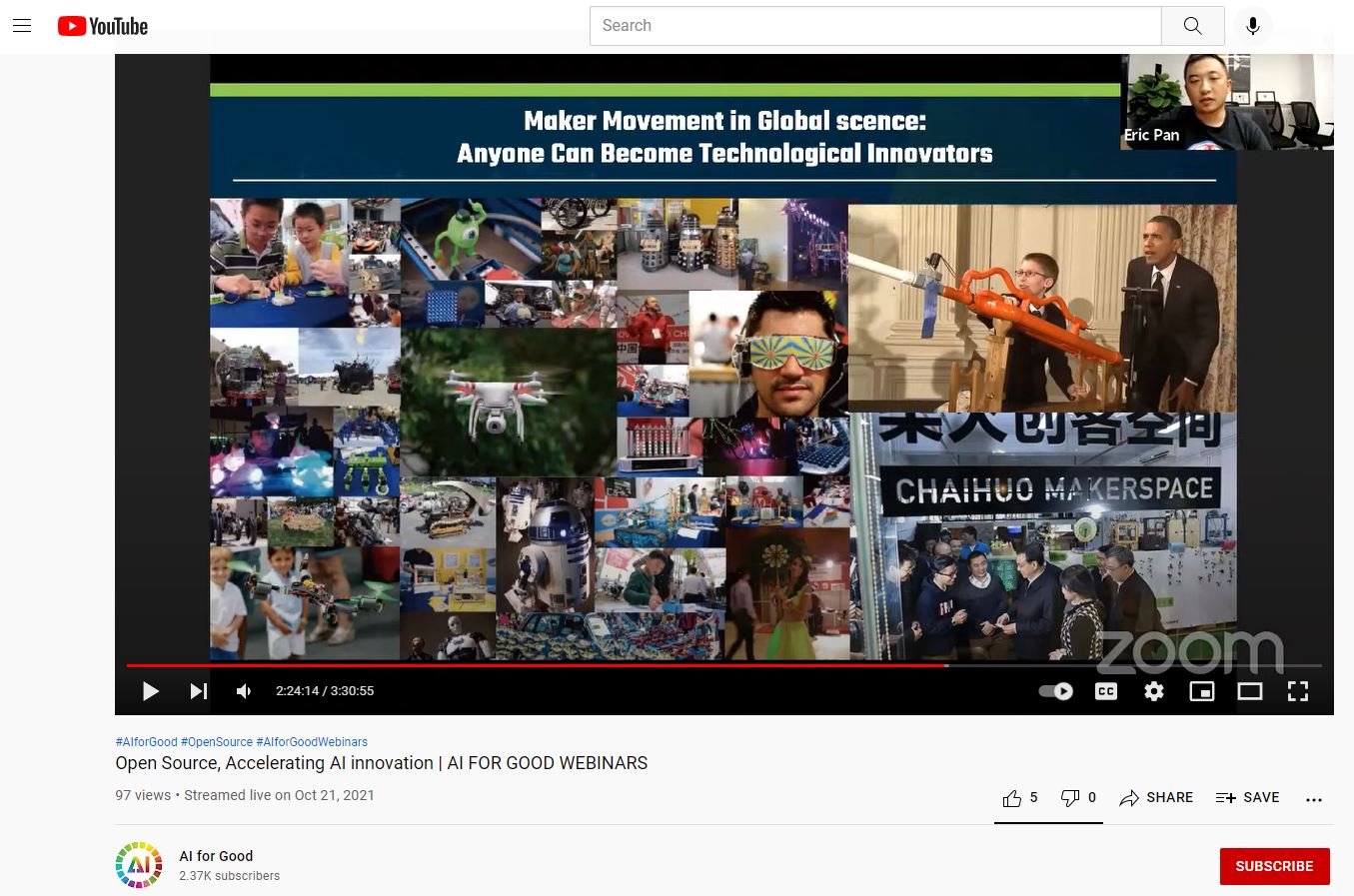
Figure 3. Anyone Can Become Tech Innovators
(AI for Good Youtube Channel, 2021)
Third, it has been learned from his speech, that technology is becoming easier and easier in recent years, inspired by the fact that numerous tech companies are realizing and recognizing a much larger growth in the number of bottom-up innovators. Thereby, he shared that the technology itself is evolving to become more reliable and easy-to-use:
“The technology that catch our eyes today is AI. The best way to code is no coding. Imagine that in a few years later, you’re talking to robots. You don’t need to put on a laptop to change a code. You just talk to it, you just train it. It’s a shorter and easier path for everyday citizens to now use AI to reshape the intelligence of their devices or into their systems around them.”
Fourth, Seeed’s WIO Terminal (Wireless Input and Output Terminal) in Mr. Eric Pan’s speech grabbed the eyes of the audience, since it is an easy IoT starter kit with tinyML on board. It was first introduced to the world at the end of 2015. With WIO Terminal, you can deploy open source hardware in a pythonic way 100%. Moreover, it can sense and tag the real-world data with 300+ Groves created by Seeed, and visualize through Azure IoT Central Platform to create an end-to-end IoT project. Some of WIO Terminal’s key features include:
- Powerful MCU: Microchip ATSAMD51P19 with ARM Cortex-M4F core running at 120MHz
- Reliable Wireless Connectivity: Equipped with Realtek RTL8720DN, dual-band 2.4Ghz / 5Ghz Wi-Fi
- Highly Integrated Design: 2.4” LCD Screen, IMU and more practical add-ons housed in a compact enclosure with built-in magnets & mounting holes
- Raspberry Pi 40-pin Compatible GPIO
- Compatible with over 300 Plug&Play Grove modules to explore with IoT
- USB OTG Support
- Support Arduino, CircuitPython, Micropython, ArduPy(What is ArduPy?), AT Firmware, Visual Studio Code
- Azure Certified Device: Sense and tag real-world data and visualize through Azure IoT Central
- TELEC certificated
Fifth, with the increasing number of people participating in using open tech for various purposes, we see that AI solutions are bringing new remedies to address SDGs (Figure 4). He shed light on why open hardware is the key for accelerating science and technology for the UN’s SDGs by referring to Gathering for Open Science Hardware’s (GOSH, 2021) recent policy brief:
- Facilitates international organizations (IOs) and governments to increase their innovation capacity by incorporating open hardware in their strategies, aligning incentives and raising awareness through education and training
- Enables new multi-stakeholder partnerships and collaborations between academia, civil society and the private sector
- Makes science more transparent, participative, global, and decentralized innovation
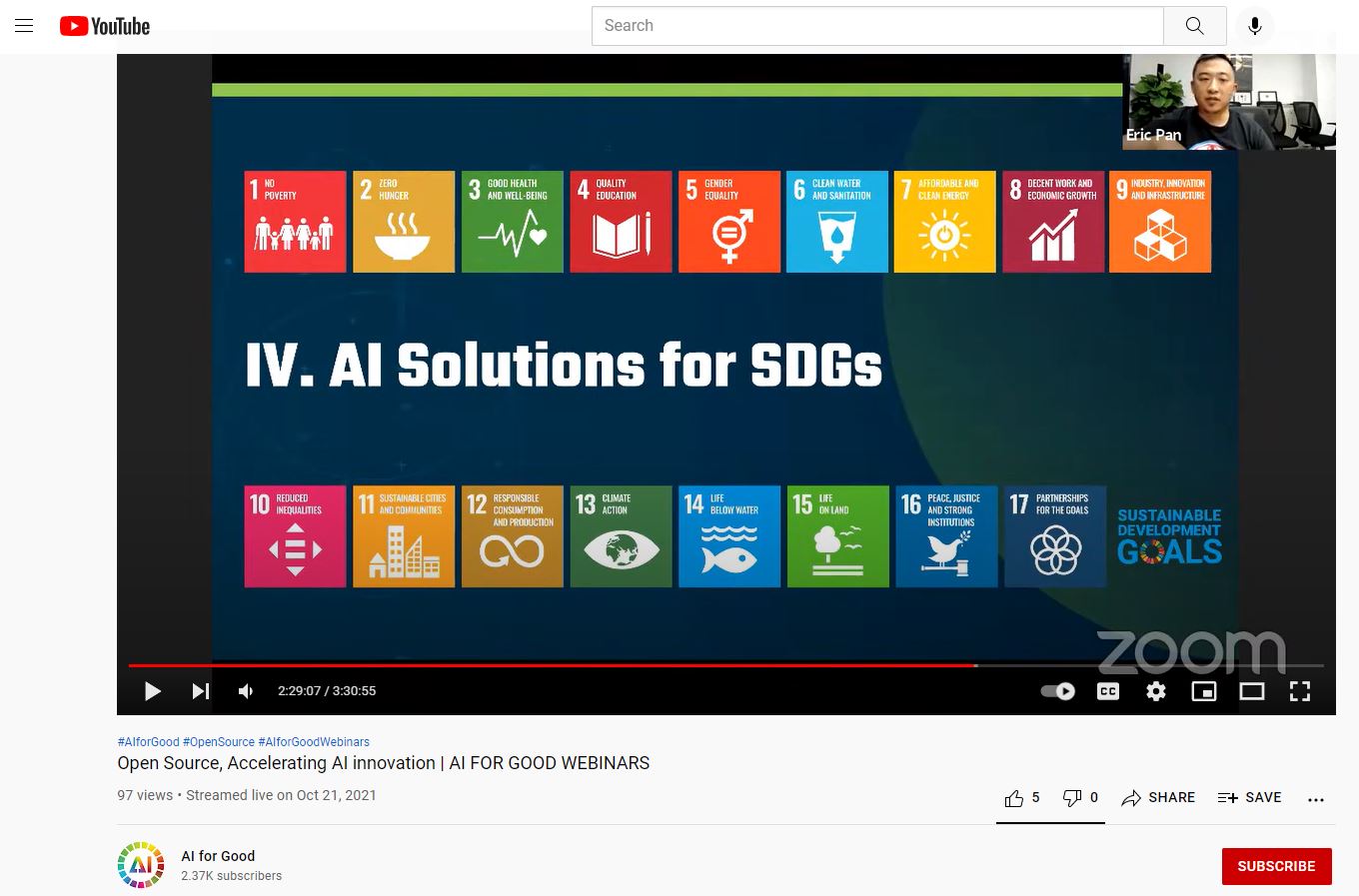
Figure 4. Technology for SDGs
(AI for Good Youtube Channel, 2021)
Sixth, last but not least, Mr. Eric Pan ended his speech by highlighting that we need more social innovators to meet the makers (Figure 5). He describes, whereas the makers have all the means to resolve a problem, social innovators have the mindset of changemakers and facilitators. The social innovators know how to manage their projects holistically, that is, not only from a technical perspective, but from cross-cultural and multi-disciplinary point-of-views by using their critical and systemic thinking. By working with other multi-stakeholders, social innovators and makers can come up with solution proposals. In this way, the solutions can be upgraded into testing various prototypes, or becoming industrial samples for small-batch to large-scale deployment.
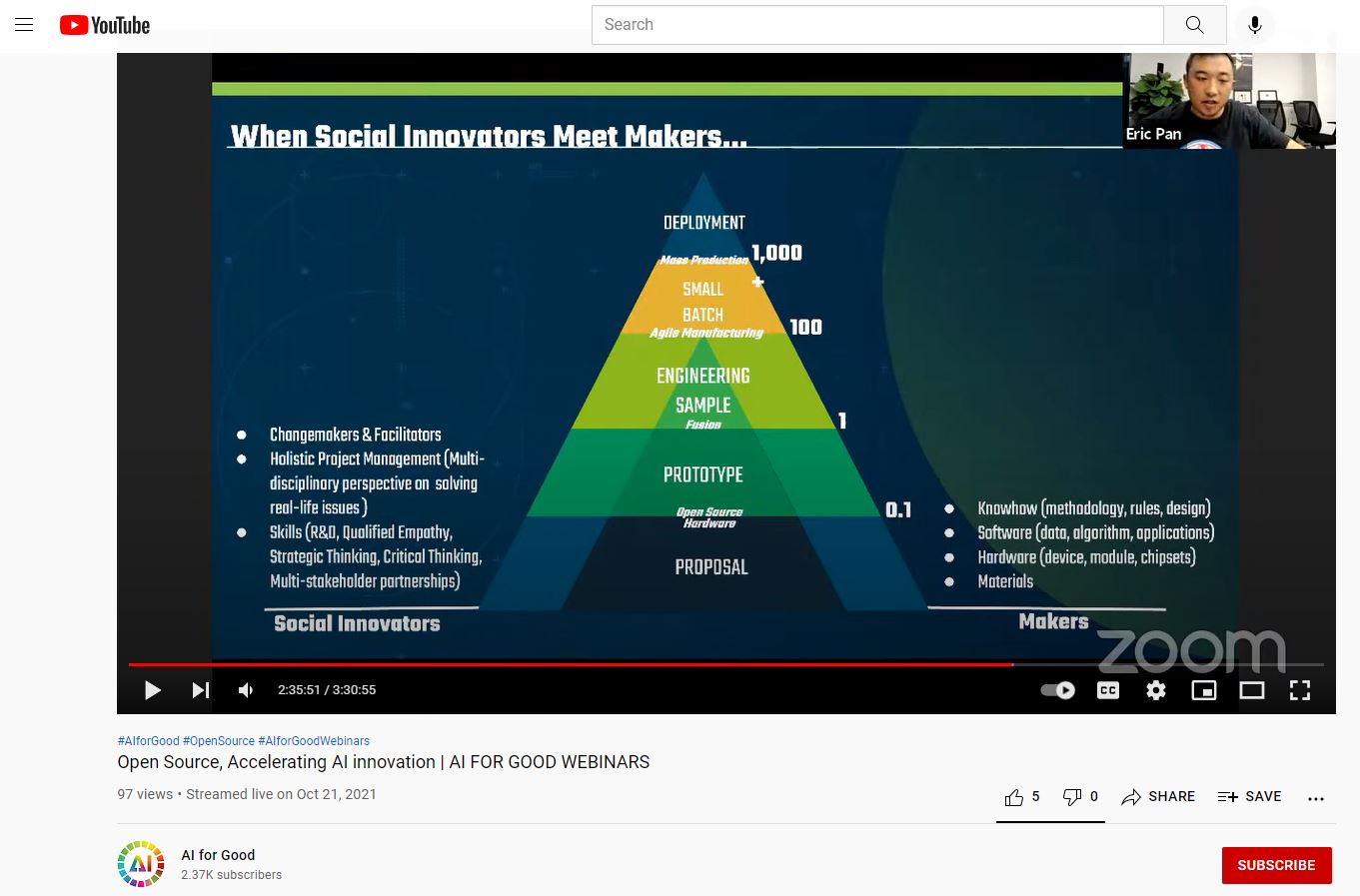
Figure 5. Social Innovators and Makers Coming Together to Create Synergy Effects
(AI for Good Youtube Channel, 2021)
To conclude, through the technological openness, more people and makers will be able to understand the mission and meaning of the SDGs, and then their creations can be utilized in daily life – be it small gadgets, products, services, or big dreams – to make our future less unsustainable, and a bit more sustainable than where we are living in today.
About Author
Ye Seong SHIN
Sustainability and CSR Manager at Seeed Studio
。
Jointly organize/participate in multi-stakeholder projects/platforms/events/webinars/workshops/hackathons/etc. to accelerate SDGs with local communities and open tech anywhere in the world by connecting with Ye Seong SHIN today on LinkedIn.
。
Seeed Studio is the IoT and AI solution provider for all types of traditional industries’ sustainable digitalization. Since its establishment in 2008, Seeed Studio’s technological products and customization services are used for smart agriculture, smart cities, smart environmental monitoring, smart animal farming, smart aquaculture, meteorological monitoring, STEAM education, and all types of emerging scenarios enabled by the Industry 4.0. With the company’s mission to “Empower Everyone to Achieve Their Digital Transformation Goals” (which shares similar values with SDGs’ Motto of “Leave No One Behind”), Seeed Studio is devoted to using open source technologies for accelerating SDGs with multi-stakeholders from UN agencies, academia, companies, CSOs, governments, public/private organizations, and so on. This is why, Seeed Studio also founded “Chaihuo Maker Space”, and started China’s first Maker Movement by annually organizing “Maker Faire Shenzhen”.